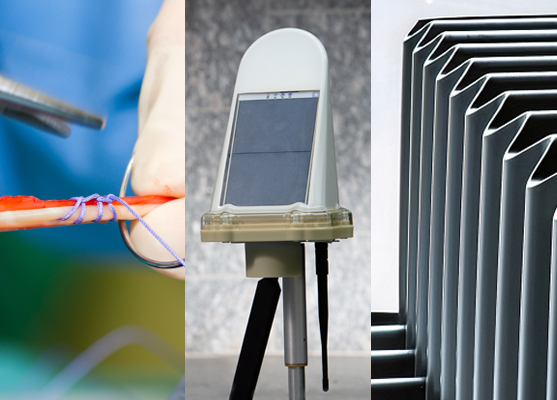Celebrating Australian Made: Three R&D collaborations bringing local innovations to the global stage
Research and development (R&D) collaborations between industry and university are revitalising Australia’s manufacturing sector.
By harnessing the power of Industry 4.0, many R&D projects are meeting the growing demand for Australian made products, bringing them to market more quickly and effectively than ever before.
MCRC supports commercial R&D projects across a broad range of sectors, from medtech to construction. While diverse in nature, each project has an overarching focus on building an intelligent sovereign manufacturing capability.
In celebration of Australian Made Week, we explore three IMCRC R&D projects contributing to the renaissance of ‘Australian made’.
A ligament replacement material made from kangaroo tendon
Bone Ligament Tendon (BLT), together with Allegra Orthopaedics and the University of Sydney, is developing arguably one of the most unique Australian made products of the decade – a kangaroo-derived ligament xenograft held in place by bioresorbable screws.
With applications across knee, ankle and shoulder ligament replacement procedures, the xenograft caters to the growing demand for off-the-shelf reconstructive material.
Made from decellularised, sterile kangaroo tendon and fixed to the bone using 3D-printed screws manufactured from antimicrobial Sr-HT-Gahnite, the material is up to six times stronger than the anterior cruciate ligament.
“Our novel xenograft is set to disrupt the world’s billion-dollar orthopaedic ligament replacement market,” said orthopaedic surgeon and head of BLT, Dr Nick Hartnell.
“It benefits patients, as it outperforms existing reconstruction materials. And it benefits Australia’s economy, creating a global supply opportunity through medical and manufacturing innovation.”
The kangaroo tendons used in the project are salvaged from by-products of the meat industry and annual culling.
A Queensland designed and manufactured displacement monitoring device
In 2018, automated monitoring specialist Monitum partnered with Queensland University of Technology (QUT) and IMCRC to develop a cost-effective device that enabled industry to automatically measure displacement.
Now in its final stages, the research collaboration has reached a commercial outcome, leveraging the Internet of Things, cloud computing and artificial intelligence to deliver a world-first automated displacement monitoring device and service, Kurloo.
With IMCRC’s support, Monitum made a conscious decision to design and manufacture its device onshore.
“In a world set to face more frequent disruptions to global supply chains, we knew we needed to guarantee ours. And that meant manufacturing our monitoring device locally,” said Lee Hellen, Montium’s managing director.
To do so, Monitum engaged the services of electronics designer and manufacturer, Intellidesign. Working collaboratively, the team transformed Monitum’s proof of concept into an innovative device ready for mass production.
“By partnering with a local manufacturer, we could operate with agility and drastically improve our speed to market,” said Hellen.
“This research collaboration has commercialised an Australian made product that holds its own against offshore competitors. And it’s solved a significant challenge for industry by delivering a world-first service that makes displacement monitoring more affordable and accessible.”
An Industry 4.0 metal-bending manufacturing cell
Geelong-based manufacturing start-up FormFlow is no stranger to research collaboration. Since its inception, FormFlow has worked hand in glove with Deakin University to develop various innovations, including its patented corrugated steel-bending technology, FORMFLOW® C90™.
This technology has revolutionised the building and construction industry by creating angled transitions between corrugated sheet sections on buildings, something that was previously impossible.
In 2021, FormFlow and Deakin embarked on a project with IMCRC to set up an Industry 4.0-enabled manufacturing cell. The smart cell is designed to control and optimise FormFlow’s steel-bending process, delivering a high-quality product with minimal waste.
“To form complex shapes with corrugated steel, it must conform to the contours of FormFlow’s bending technology. Because different steel manufacturers use different contours, the project focused on developing a solution that maps the corrugations and adjusts the bending technology to suit the steel’s unique profile,” said Dr Matthew Dingle, FormFlow’s managing director.
“We’ve achieved two commercial outcomes. The first is the FormFlow 2D laser system, which monitors the cross-sectional shape of sheets before and after bending and enables continuous quality control. The second is the in-phase continuous corner manufacturing technology, which can produce a roofing corner product from a flat sheet of steel.
“These outcomes will allow us to expand our markets globally, respond to different customer requirements and deliver high-quality, Australian made products.”

